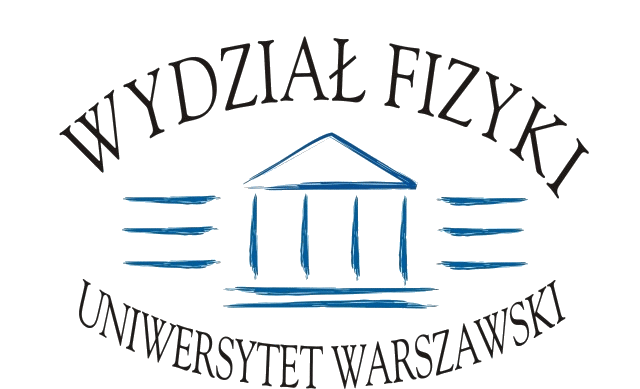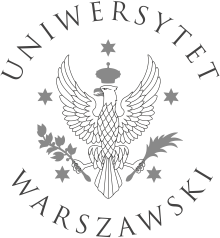Seminarium Fizyki Materii Skondensowanej
2006/2007 | 2007/2008 | 2008/2009 | 2009/2010 | 2010/2011 | 2011/2012 | 2012/2013 | 2013/2014 | 2014/2015 | 2015/2016 | 2016/2017 | 2017/2018 | 2018/2019 | 2019/2020 | 2020/2021 | 2021/2022 | 2022/2023 | 2023/2024 | 2024/2025
2025-06-13 (Piątek)
Marcello Porta (SISSA Trieste, Italy)
The π-flux phase for Z2 gauge theory coupled to fermionic matter
The 2d Z2 gauge theory coupled to matter describes fermions on a square lattice interacting with a dynamical Z2 valued gauge field. Depending on the parameters, the model is expected to realize several interesting phases of matter. I will present a result that shows that, at half-filling and for large enough fermionic hopping, the ground state of the gauge theory coincides with the π-flux phase, characterized by magnetic flux equal to π in every elementary lattice plaquette. This proves in particular the semimetallic behavior of the ground state of the model. Furthermore, we compute the magnetic susceptibility of the gauge theory, and we prove that it is given by the one of massless 2d Dirac fermions, as observed in recent numerical simulations. The proof is based on reflection positivity and on the chessboard estimate. In the last part of the talk, I will discuss recent progress in understanding the stability of the π-flux phase in presence of Hubbard-type interactions, via the combination of reflection positivity methods, rigorous renormalization group techniques, and Ward identities. Joint work with Leonardo Goller (SISSA).
2025-06-06 (Piątek)
Gonzalo de Polsi (Universidad de la República, Montevideo, Uruguay)
Critical phenomena and conformal symmetry: a glance from the functional renormalization group
Critical phenomena, or second order phase transitions, are a particular regime of systems exhibiting correlations at macroscopic scales. At this regime, systems exhibit scale invariant behavior which manifests as power laws of its properties on a control parameter. It is also conjectured that, generally speaking, at the critical regime the system becomes not only scale invariant but rather invariant under any conformal transformations, i.e. transformations preserving angles. After many efforts, in the last decade or so, conformal symmetry was successfully utilized to give precise predictions about systems.When studying systems presenting this strongly coupled regime, we encounter the difficulty that subdividing it into isolated blocks each of a few degrees of freedom is not suitable and an integrated approach is mandatory. For this purpose, Wilson's renormalization group (RG) was conceived. The functional renormalization group (FRG), a modern version of Wilson's RG, is a theoretical framework which progressively incorporates the degrees of freedom of the system starting from a microscopic hamiltonian. It is natural to expect that considering conformal symmetry into the picture could give valuable information to the study of critical systems also in this framework. In this talk we will discuss how we can incorporate conformal symmetry to the FRG and how it interacts with the standard methods typically used.
2025-05-30 (Piątek)
Félix Rose (CY Cergy Paris Université)
Probability distribution function of the 2d Ising order parameter
The question of the probability distribution of the sum of random variables has elicited considerable attention from various fields of physics and mathematics. While the case of uncorrelated variables is described by the central limit theorem and its extensions, that of strongly correlated variables is more complicated. Turning our attention to the canonical example of strongly correlated variables, Ising spins close to criticality, we discuss the rate function that describes the statistics of their sum, the field theoretical formalism that allows us to compute it and present results obtained from the nonpertrubative functional renormalization group. In particular, while in 3d a simple local potential approximation is enough to reproduce the rate function, in 2d, owing to the stronger correlations at the fixed point, it is necessary to go beyond. We show that taking into account the momentum dependence of the correlation functions is crucial to correctly reproduce the rate function.
2025-05-23 (Piątek)
Marcin Mierzejewski (Politechnika Wrocławska)
Local integrals of motion in quantum lattice models
Local integrals of motion (LIOMs) play a key role in understanding the stationary states of closed macroscopic systems. Generic systems have only a few conserved quantities (like Hamiltonian, particle number, magnetization) and evolve to a thermal Gibbs state. Interacting integrable systems have extensive number of LIOMs and the relevant stationary states have the form that is consistent with the generalized Gibbs ensemble. LIOMs were found for selected integrable systems via complex analytical calculations. The existence of LIOMs and their structure can also be studied via numerical methods, which, however, involve exact diagonalization of Hamiltonians, posing a bottleneck for such studies. We show that finding LIOMs in translationally invariant lattice models or unitary quantum circuits can be reduced to a problem for which one may numerically find an exact solution also in the thermodynamic limit. We develop and implement a simple algorithm and demonstrate the efficiency of this method by calculating LIOMs for infinite integrable spin chains and unitary circuits. Finally, we demonstrate that this approach correctly identifies approximate LIOMs in nearly integrable spin ladders.
2025-05-16 (Piątek)
Banhi Chatterjee (Univ. Duisburg-Essen)
Ground state symmetries and collective modes in Ta2NiSe5- an excitonic insulator candidate
2025-05-09 (Piątek)
Flavio Nogueira (IFW Dresden)
Quantum criticality in altermagnets
The term altermagnetism has recently been introduced to describe the N´eel order of a class of materials whose magnetic sublattices are neither related by translation nor inversion. While these materials arguably have largetechnological potential, little effort has been devoted to studying the universal distinction of this phase of matter compared to collinear antiferromagnetism. We discuss a minimal microscopic model from which a nonlinear sigma model can be derived that describes the long-wavelength fluctuations of the staggered magnetization in this system, including quantum effects to leading order. The term that distinguishes the altermagnetic nonlinear sigma model from its antiferromagnetic counterpart is an interaction term that derives directly from the Berry phase of the microscopic spin degrees of freedom. Extending the theory to describe the fermionic excitations of the metallic altermagnet, we find an effective low-energy model of d-wave spin-split Dirac fermions interacting with the magnetic fluctuations. Using a Dyson-Schwinger approach, we derive the many-body effects on the dynamical critical scaling due to the competition between the long-range Coulomb interaction and the fluctuations of the staggered magnetization.
2025-04-25 (Piątek)
Nicholas Sedlmayr (UMCS Lublin)
A Dynamical Bulk-Boundary Correspondence
We study dynamical quantum phase transitions following quenches in one- and two-dimensional symmetry protected topological matter. For quenches where dynamical quantum phase transitions occur, we find that cusps in the bulk return rate at critical times are associated with sudden changes in the boundary contribution to the dynamical free energy (the return rate). For our first main example, the Su-Schrieffer-Heeger model, we show that these sudden changes are related to the periodical appearance of two eigenvalues close to zero in the dynamical Loschmidt matrix, in. a close analogy to the equilibrium bulk-boundary correspondence. We demonstrate, furthermore, that the structure of the Loschmidt spectrum is linked to the periodic creation of long-range entanglement between the edges of the system. Generalisations to topological models with arbitrary topological indices, higher dimensional topological matter, and higher order topology, and connections to order parameters are also discussed. In all cases we see evidence of a dynamical bulk-boundary correspondence.
2025-04-11 (Piątek)
Jean-Sébastien Caux (University of Amsterdam)
Observables in exactly-solvable systems: matrix elements, scaling, regularization and a perspective on resummations
Exact solutions are available for a number of models of great interest in quantum mechanics, including some with promise for quantum information processing. In practice however, such formal exact solutions are challenging to translate into detailed quantitative predictions: any connection between the underlying system and its measurable quantities relies on knowing how physical operators and model (eigen)states "talk" to each other, this being quantitatively encoded in operator matrix elements. If obtained, these can then be "cooked" into correlation functions via Lehmann representations, but summing contributions is generally challenging.This talk will focus on the matrix elements themselves. For given observables, their dependence on states and excitations will be discussed, as well as how sensitive they are to various modifications of the details of the states. An approach towards regularizing microscopic states into field theory-like entities will be discussed, with potential use in computing correlations and managing (numerical) renormalization approaches to in- and out-of-equilibrium situations.
2025-04-04 (Piątek)
Alexander Tsirlin (Felix Bloch Institute, Leipzig University, Germany)
Altermagnetic, or not?
Altermagnetism is a recent addition to the solid-state physics vocabulary. This term encompasses magnetically ordered crystals with zero net magnetization and the splitting between spin-up and spin-down bands that should lead to several practical implications, including anomalous Hall effect and chiral magnons.In this talk, I will present the current status of observing these effects in solid-state materials. I will first concentrate on the potential metallic altermagnets and review the altermagnetic candidacy of RuO2. I will show that the very presence of magnetic long-range order in this seemingly simple and well-known material is highly controversial, and the main experimental signatures of altermagnetism should be in fact attributed to peculiarities of the band structure in the paramagnetic state. I will further address the abundant class of insulating altermagnets and the prospects of observing chiral magnons therein.
2025-03-21 (Piątek)
Przemysław Oliwa (IFD FUW)
General 2-Mode Non-Hermitian Hamiltonian as a Universal Tool for Microcavity Description
The typical description of a planar microcavity relies on two different approaches. The first is a fully numerical method, known as the Transfer Matrix Method (TMM), which is highly complex but accurately reproduces experimental observations, as it accounts for all interactions that are linear in the electric or magnetic field. The second approach is a semi-analytical method based on the diagonalization of a 2-mode Hamiltonian, which describes the interaction between two cavity modes with similar energy for a perpendicularly incident wave. While this second approach is significantly simpler, it has several limitations, such as being restricted to terms up to quadratic order and difficulties in determining the non-Hermitian part due to the complex relationship between the Stokes polarization pattern or energy dispersion and the coefficients of the 2-mode Hamiltonian. In some cases, higher-order terms are introduced into such Hamiltonians, but they are typically added in theoretical calculations as ad hoc terms.Here, we present new approaches for determining a 2-mode non-Hermitian Hamiltonian that accurately reproduces both energy and polarization dispersion for different types of cavities. The first method is based on the Green’s function and is limited to quadratic terms in the wavevector. The second method utilizes data obtained from the Transfer Matrix Method and, through symmetry-invariant considerations, enables the determination of a general 2-mode non-Hermitian Hamiltonian that fully captures both energy and polarization dispersion. These symmetry-based considerations predict the symmetry invariants for different types of cavities, ultimately allowing for the determination of symmetric polynomials fitted to the TMM results. Although this second approach is not derived from fundamental physical principles, it overcomes the limitations observed in the first method.This entirely new approach provides insight into non-Hermitian effects observed in birefringent microcavities. One example is the different number of polarization singularities (C-points – points where the light is purely circularly polarized) in the two photonic branches. Another example is the topological transition of the winding number of the exceptional point.
Stron 1 z 3






